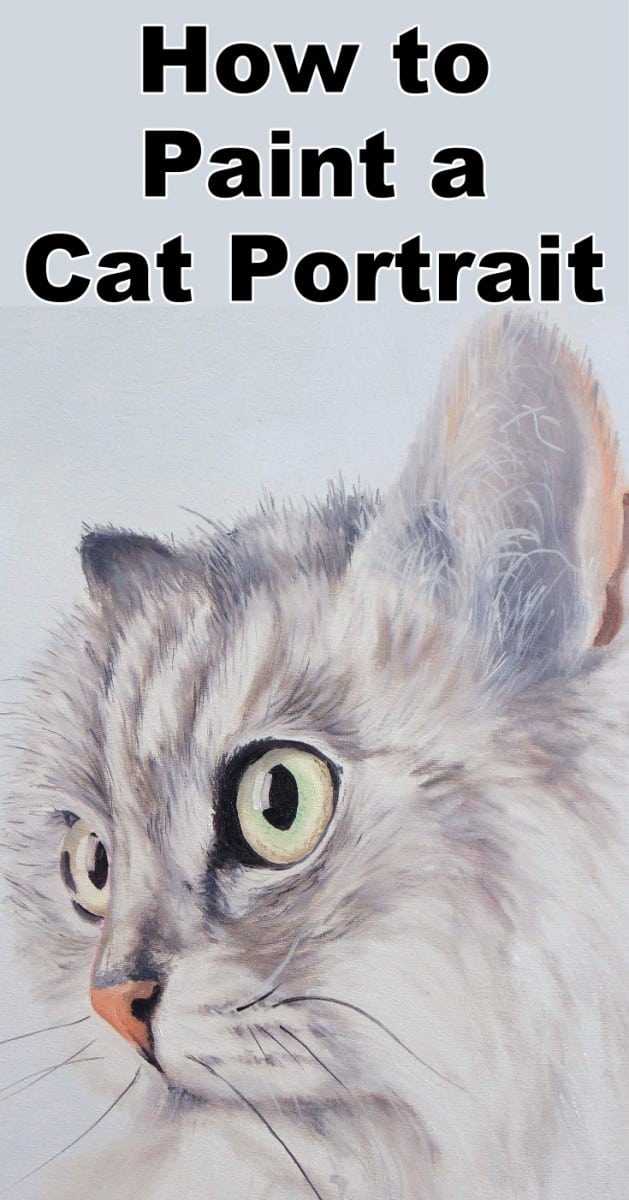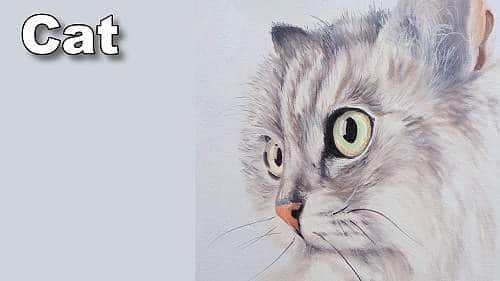Short Class Video
Class Tutorial
Painting the background
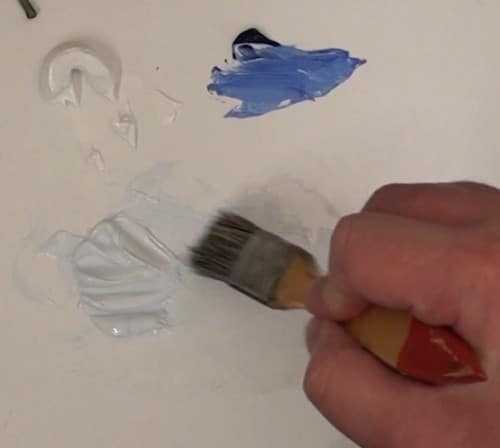
Use your preferred method to transfer the shape of the cat to the canvas.
Put the following paints on your palette: titanium white and blue (whatever shade you prefer). Mix a tiny bit of the blue into the white. Add medium to make it flow smoothly.
Use a hardware brush to spread a light layer of paint onto the canvas. Slightly overlap the edges of the cat.
Mixing the paints
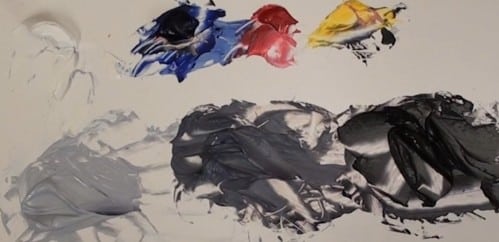
Add cadmium red and cadmium yellow to the blue mixture already on the palette to use to make a black colour. It will serve as the basis for the gray tone you will need for the cat’s hair. Mix several shades of gray.
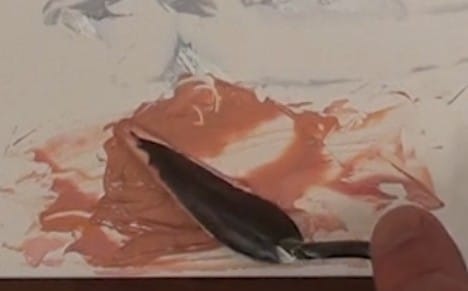
Then mix a pink tone for the area around the ear.
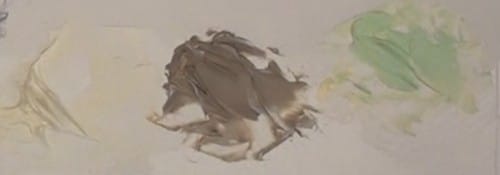
Also mix the eye colours. One will have an umber tinge and the other will have a veridian tinge.
Painting the hair
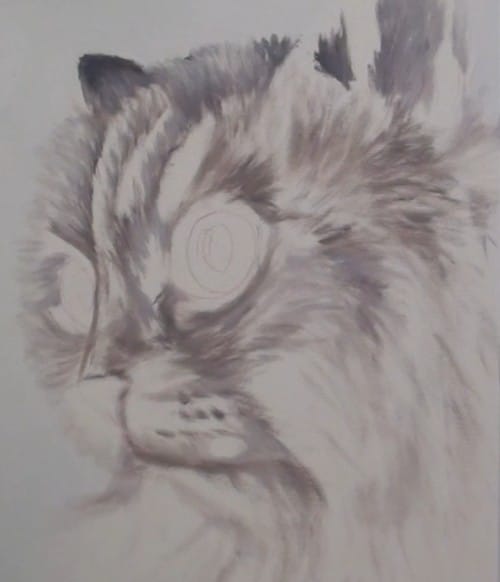
Add medium to the white and gray hair colours to the consistency of mayonnaise. Leave the black colour as is.
Paint the areas that need the second darkest hair colour with a small bristle brush using a short scrubbing motion. Be sure to paint in the direction of the hairs.
Then use the same technique for painting the darkest hairs. You will be using the paint lightly. Adjust the paint as needed for tonal values in different areas as you work.
Next add the lightest gray hair colour where appropriate.
Painting the eyes
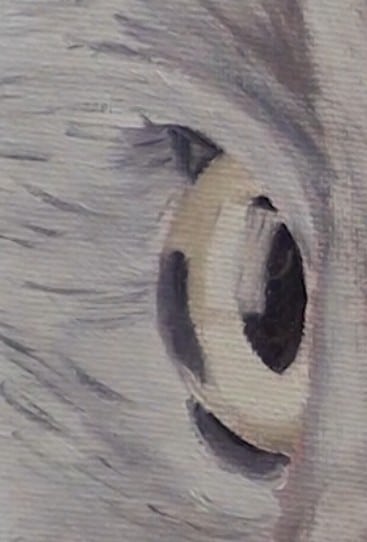
Use a fine round brush to apply the eye colour. Start with the yellowish green tone. Follow with the umber shade. Then paint the black areas as seen in the reference photo. Clean the paint off the brush and use it to add a bit of colour to the right side of the window reflection on the eye. Add the umber colour around the left side of the reflection. Adjust tonal values on the eye. Fill in the dark triangular patch in the corner of the eye. Brush on some additional hairs.
Move to the other eye and use the same process to paint it.
Adding more hairs

Go over the painting and add hairs of varying grays where needed, using a brush with a chiseled point.
Painting the nose
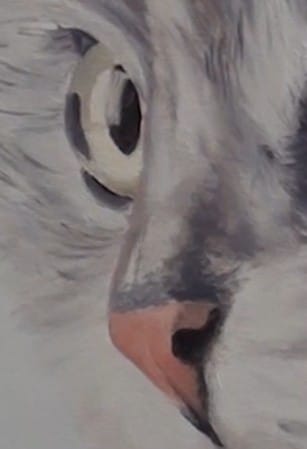
Block in the nose area using the pink tone. Add the shadows and highlights to the nose and surrounding area. Paint in the black nostril.
Painting the mouth
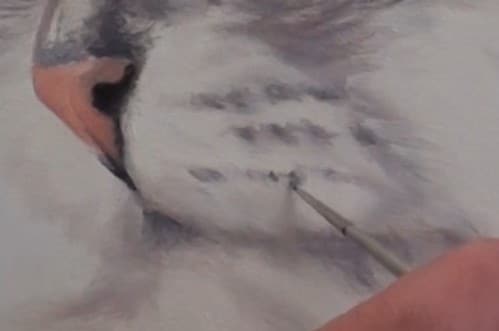
Use your reference photo to guide you in the placement of the small dark splotches that form the mouth.
Paint the black dots that serve as anchor spots for the whiskers, then blend them into the surrounding paint.
Painting the overlapping hair
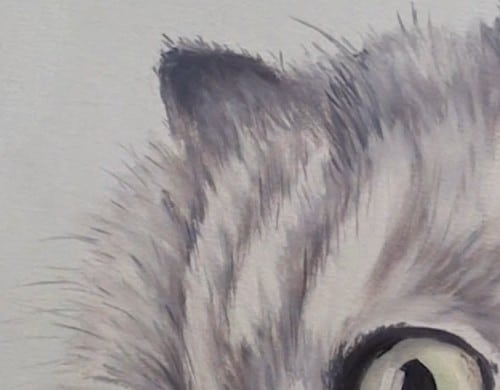
Use a larger fine round brush and different shades of the gray paint to imitate Nolan’s brush strokes to overlap the hairs. End with the white paint to give depth to the hair.
Painting the ears
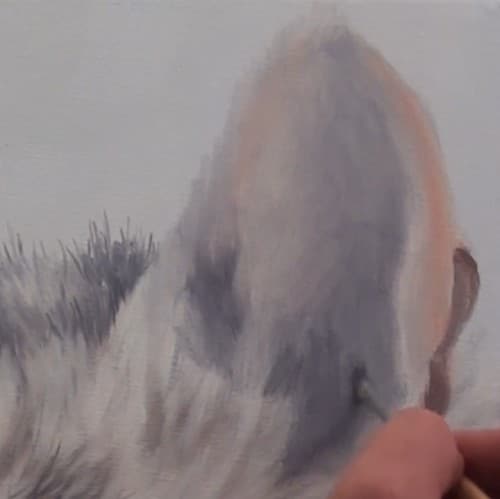
Paint the edges of the ears with the light pink tone, then brush on the white and gray tones. Add the dark contrasts. Use a bristle brush to suggest the ear hairs that are in the shadow. Paint the dark spot inside the ear. Use a rigger brush with thin white paint to form the long hairs in the ear. Do the same with some of the gray tones where needed.
Painting the whiskers
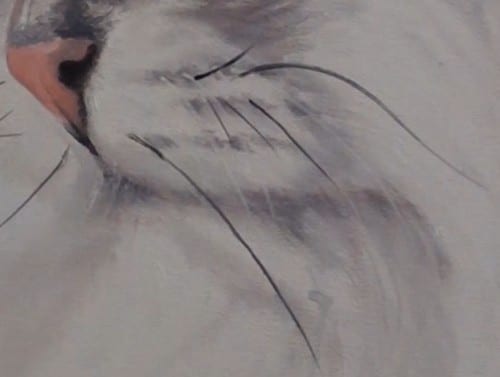
Use thin white paint and a rigger brush to add the whiskers. Do the same to add the dark whiskers.
Final painting
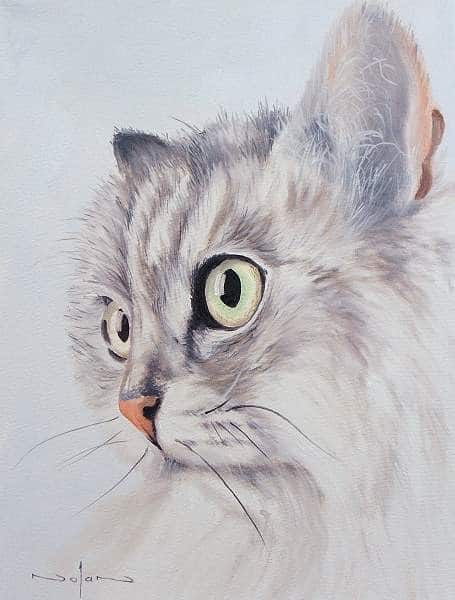
Click the button below to view the real time follow along version of this class:
Pin Me
